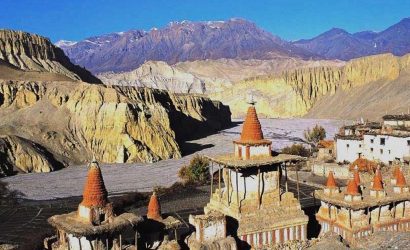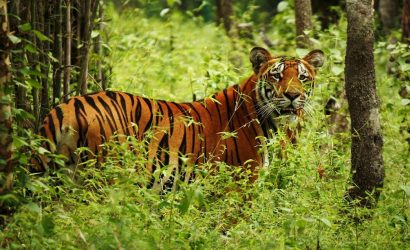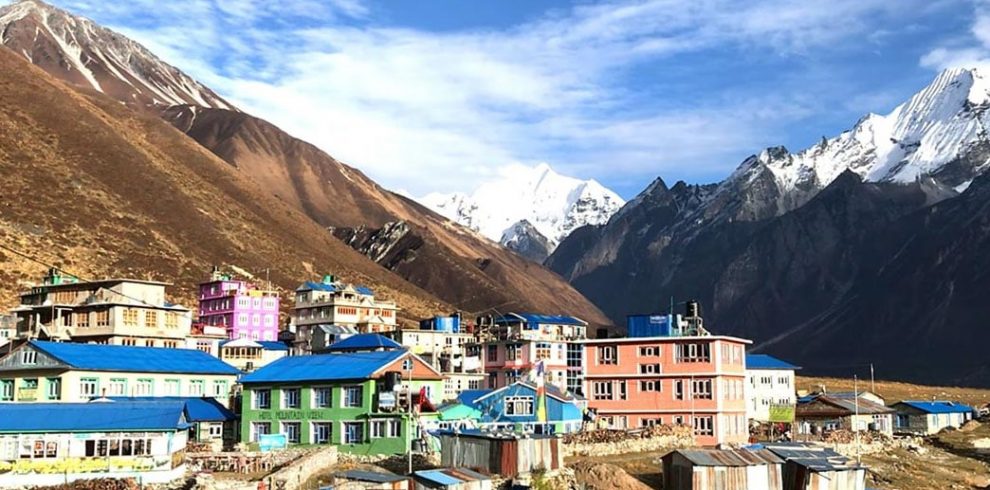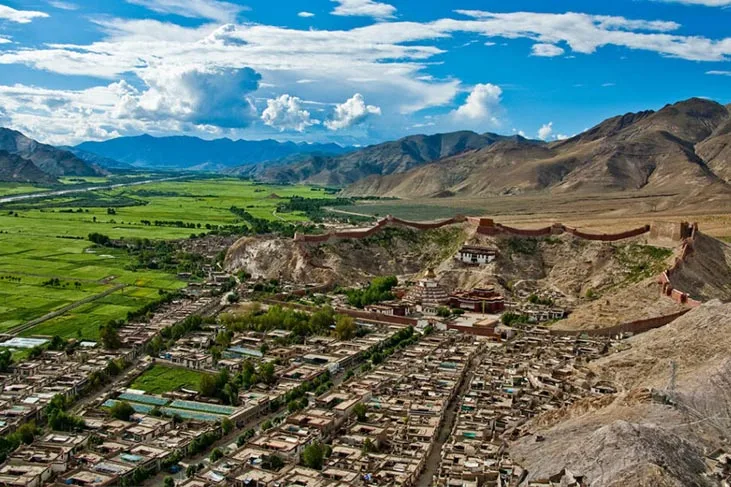Jomsom is at an altitude of about 2700 m in Mustang District, Nepal. The area extends over the banks of the Kali Gandaki River. It is a perfect place to find fossilized ammonites, known locally as Shaligram, which are found all along the upper reaches of Kali Gandaki . It is holy to the Hindus. Jomsom Airport from where there are regular flights and is a great place to start trekking. The diverse landscapes and cultures to be found along the trekking routes give marvelous insight into the way of life of rural Nepali people
In Jomsom, you find Muktinath, a temple, equally famous pilgrimage site for Buddhists and Hindus. To Hindus, Muktinath is a sacred place of salvation. They believe that bathing in the waters here guarantees salvation after death. The Hindu god, Brahma, is said to have lit the eternal flames that burn at Muktinath. To Buddhists, Muktinath is a place where the great sage guru Rinpoche (Padmasambhava) came to meditate. This part of Nepal is inhabited by Gurungs and Magars whereas Thakalis in the lower regions of the Kali Gandaki river.
Their customs and attire are distinct and this trek is ideal for observing the diversity among the people and their customs. Hindu and Buddhist have harmony in religious tolerance. Hinduism dominates the lower parts while as one climbs further up, Tibetan Buddhism predominates. In early September, you are likely to be in time for one of Nepal’s unique festivals, the annual horse race known as Yartung. This is a week of some serious horse racing, Tibetan style, and some equally merrymaking. Most of the route along the Jomsom trek is connected as part of the Annapurna circuit and Annapurna foothill treks. The usual trek starts from Naya Pul on the Pokhara to Baglung road and from there, via Ghorepani and Tatopani, into the gorge of the Kali Gandaki.
The layout of the villages and the design of the houses are unique. The houses are designed to protect the inhabitants from the strong winds that blow up the valley everyday from the late morning onwards. These winds are caused by differences in atmospheric pressure between the Tibetan plateau and the lower reaches of the valley. The best example of the unique architecture of this region is found in the village of Marpha which is a two-hour walk down from Jomsom.
Jomsom has Tibetan influenced village filled with prayer wheels, chortens and a Buddhist monastery. The geographical scenery of the area ranges from forests of bright Rhododendrons to rocky cliffs and desert. The culture along the track is a rich Combination of Hindu and Tibetan Buddhism. Jomsom is the main commerce and administrative center of Nepal’s Mustang region. Mustang is also famous for its apple orchards, sacred lakes, and Muktinath, one of Nepal’s most revered religious pilgrimage sites.
Visiting Mustang is a highly unique and memorable experience. Another boon to the region is that the window for traveling remains open longer than elsewhere in Nepal due to its location in the Himalayan rain shadow area, where the arid climate is not affected by the yearly monsoons. Though the winter months in Mustang are excessively cold and harsh, the conditions throughout the remaining months provide for pleasant traveling conditions. Wind in the mountains also causes frequent flight cancellations or delays, a wise thing to consider when flying in and out of Jomsom.
The district of Mustang is one of the most beautiful and varied districts in all of Nepal. The southern border reaches down into the middle hills near the Pokhara Valley while the northern half stretches up through the Himalayan ranges onto the Tibetan Plateau. The Kali Gandaki River flows beneath lofty snow-clad peaks creating a stunning landscape.






